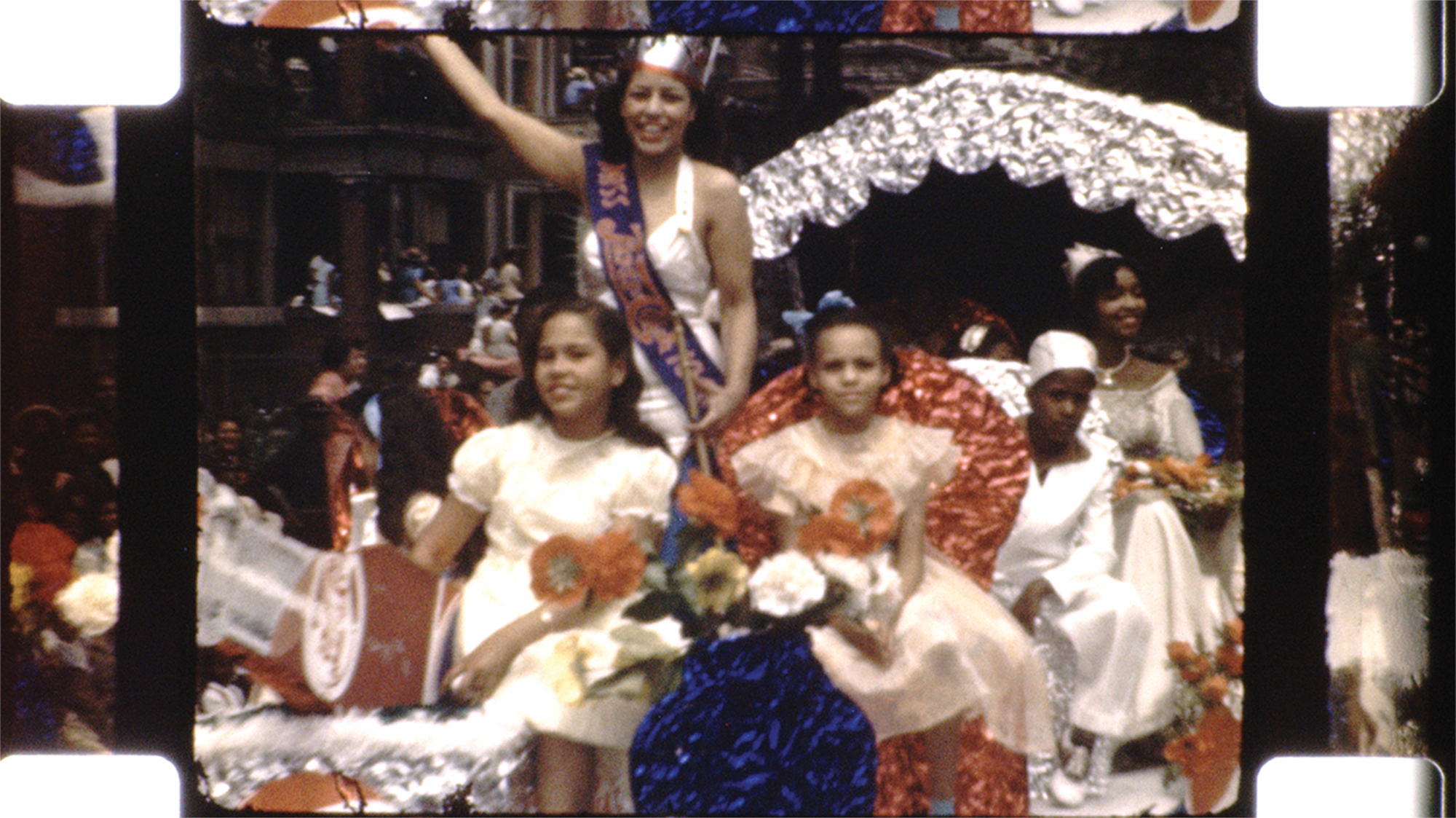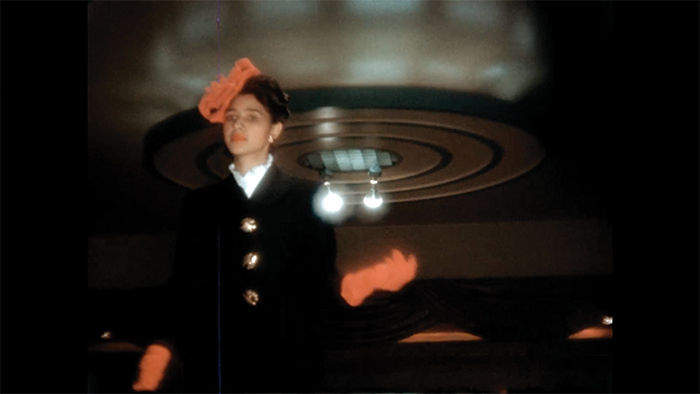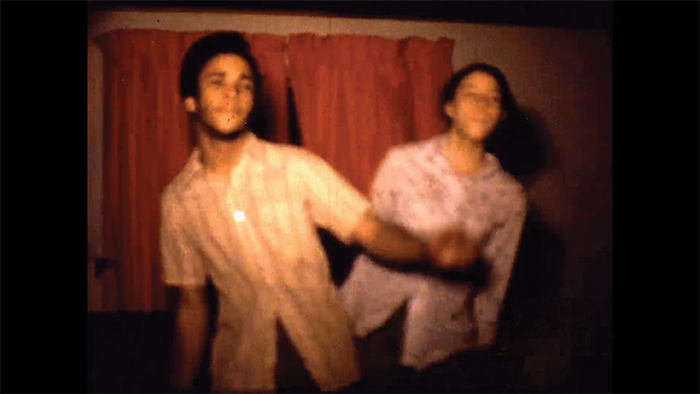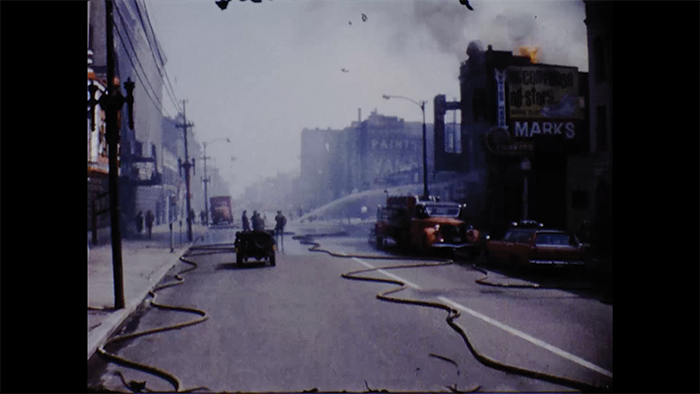
A 1950s float at Chicago’s historic Bud Billiken Parade from the Ramon Williams Collection. Williams, an electrician and amateur filmmaker, documented life in Bronzeville from the 1940s to the 1960s. In 2020 the South Side Home Movie Project received over 300 reels of film shot by this “citizen with a camera”—the project’s largest-ever donation. (From the Ramon Williams Collection, courtesy of the South Side Home Movie Project, an initiative of Arts + Public Life at the University of Chicago.)
The South Side Home Movie Project brings Chicago history to life.
“We want your home movies!” proclaimed Hyde Park Herald ads and flyers taped up in South Side storefronts. Two decades ago, the scrappy archive headed by Jacqueline Stewart, AM’93, PhD’99, first put out the call for the historical treasure troves hidden in basements and attics.
Today, in a climate-controlled vault at the Reva and David Logan Center for the Arts, the South Side Home Movie Project (SSHMP) holds over 1,200 reels of footage shot by South Siders from the 1930s to the 1980s. And with a few clicks on the archive’s online portal, anyone can step inside a 1940s nightclub, wave to Joe Louis in the Bud Billiken Parade, or spend Christmas morning in a living room in the Chatham neighborhood.
This year the project is marking its 20th anniversary with an exhibition titled “The Act of Recording Is an Act of Love,” kicking off a yearlong celebration of the project’s journey collecting community history.
In the early 2000s, Stewart, a renowned film scholar and South Side native, had become increasingly interested in how nontheatrical films contribute to motion picture history. At a Home Movie Day event in New York, she saw the power of community screenings.
“I thought it was a phenomenal way to bring that kind of local moviemaking to light, to honor the people who made it and to immediately show them why it was important to share it with others,” says Stewart, a professor in cinema and media studies and host of the Silent Sunday Nights program on Turner Classic Movies.
For the past 20 years, SSHMP, now part of Arts + Public Life at UChicago, has carefully digitized and preserved hours of footage from families and amateur filmmakers. Just as essential as protecting these physical materials, Stewart says, are the programs and events that activate the collection by bringing together people who donated footage, community members, musicians, and scholars.
“Step by step, we’ve been working to discover new ways to share these films within and beyond the South Side communities in which they were made,” says Stewart, who recently returned to campus after serving as director and president of the Academy Museum of Motion Pictures in Los Angeles. “I’m hoping that our 20th anniversary can be a way for us to connect with more partners to help us make sure that this archive continues to build and thrive for generations to come.”
The 20th anniversary exhibition title was inspired by an observation from poet and musician Jamila Woods after viewing materials from the archive: “The act of recording is an act of love,” she said. “To press record is to say, ‘I want to remember you, I wish you to be remembered.’”



